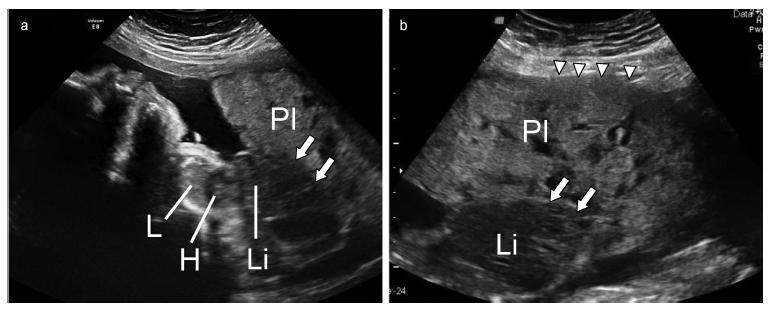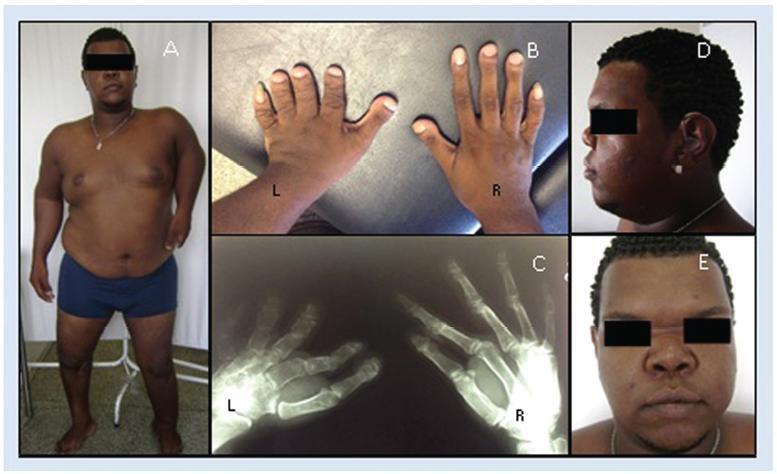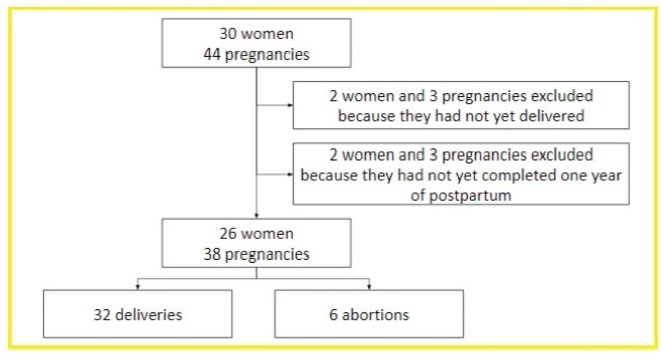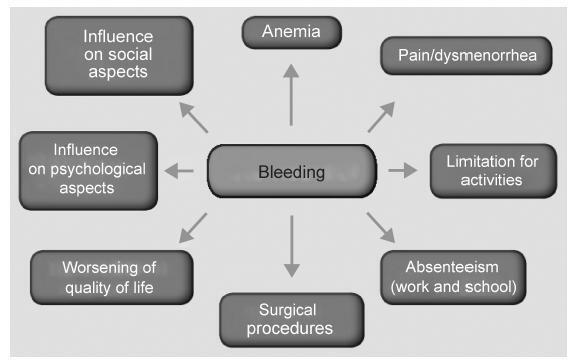-
Original Article07-26-2024
Mid-pregnancy circulating cytokine levels, placental efficiency and their relationship with preterm birth
Revista Brasileira de Ginecologia e Obstetrícia. 2024;46:e-rbgo58
Abstract
Original ArticleMid-pregnancy circulating cytokine levels, placental efficiency and their relationship with preterm birth
Revista Brasileira de Ginecologia e Obstetrícia. 2024;46:e-rbgo58
Views238See moreAbstract
Objective
To assess a panel of cytokines and placental insufficiency with the risk of preterm delivery (PTD).
Methods
Nested case-control study into the BRISA birth cohort. Eighty-two mother-infant-placenta pairs were selected at 20+0 to 25+6 weeks. Circulating biomarker levels were performed using Luminex flowmetric xMAP technology. Cytokines classified as Th1, Th2 or Th17 and other biomarkers were selected. The ratio between birth weight and placental weight (BW/PW) was used as a proxy for placental efficiency. Spearman correlation, univariate analyses and logistic regression models were calculated. Sensitivity, specificity, positive and negative likelihood ratios were calculated using the Receiver Operating Characteristic curve.
Results
Mean gestational age was 250 days, 14,6% were small for gestational age, 4,8% large for gestational age and 13,4% stunted. Placental efficiency was higher for term newborns (p<0,001), and 18/22 (81%) preterm biomarker values were higher than the control group. Th1 cytokines were highly correlated, while the weakest correlation was observed in other biomarkers. Less education was associated with a higher risk of PTD (p = 0.046), while there was no appreciable difference in the risk of PTD for placental insufficiency. Biomarkers showed negligible adjusted OR of PTD (0.90 to 1.02). IL-6, IL-8, IL-1β, TNFβ, IL-4, IL-13, GCSF, MIP1A, VEGF, EGF, and FGF2 presented a higher sensitivity ranging from 75.56% to 91.11%.
Conclusion
IL-8, IL-12p40, IL-4, IL-13, GCSF, MIP1B, and GMSF in asymptomatic pregnant women were associated with PTD. This finding suggests an activation of maternal inflammatory response.
-
Review Article07-26-2024
HPV and coronary diseases in menopausal women: an integrative review
Revista Brasileira de Ginecologia e Obstetrícia. 2024;46:e-rbgo57
Abstract
Review ArticleHPV and coronary diseases in menopausal women: an integrative review
Revista Brasileira de Ginecologia e Obstetrícia. 2024;46:e-rbgo57
Views277See moreAbstract
High-risk human papillomavirus (HPV) infection is associated with cervical cancer while low-risk HPV strains mostly cause benign lesions. Multiple studies have also associated HPV with coronary artery (CAD) disease in women. Furthermore, the climacteric period in women, triggers chronic inflammation and has major implications for CAD and associated lipid disorders. The association of HPV with coronary artery disease in climacteric women has few studies, and the objective of this review is to gather and analyse scientific data on the subject. This is an integrative review performed on PubMed and Google Scholar using the keywords “HPV”, “coronary heart disease” and “climacteric”, among these keywords the boolean operator AND and the publication date filter. (2018 onwards). Five articles were found, whose main results show presence of high-risk vaginal HPV in climacteric women. Climacterium and HPV were associated with a three-fold increased risk of CAD, as well as with factors related to menopause that promote atheroma formation, lipid disorders and chronic inflammation. Thus, these results support the association between HPV infection and CAD in climacteric women, possibly via chronic inflammation, hormonal factors related to menopause and dyslipidemia.
-
Original Article07-26-2024
Validation and cultural translation for the Brazilian Portuguese version of the Estro-Androgenic- Symptom Questionnaire in Women
Revista Brasileira de Ginecologia e Obstetrícia. 2024;46:e-rbgo56
Abstract
Original ArticleValidation and cultural translation for the Brazilian Portuguese version of the Estro-Androgenic- Symptom Questionnaire in Women
Revista Brasileira de Ginecologia e Obstetrícia. 2024;46:e-rbgo56
Views223Abstract
Objective
This study aimed to translate and validate the Estro-Androgenic-Symptom Questionnaire in Women (EASQ-W) into Brazilian Portuguese language, as we hypothesized that this tool would be consistent for addressing the specific context of hormonal symptoms in menopause.
Methods
In a cross-sectional study, a total of 119 women with Genitourinary Syndrome of Menopause (GSM) and 119 climacteric women without GSM were included. The EASQ-W was translated, and its psychometric properties were rigorously examined. Participants completed questionnaires covering sociodemographic details, the EASQ-W, and the Menopause Rating Scale (MRS). A subgroup of 173 women was re-invited after 4 weeks for test-retest analysis of the EASQ-W. Additionally, the responsiveness of the questionnaire was evaluated in 30 women who underwent oral hormonal treatment.
Results
The internal consistency of the EASQ-W was found to be satisfactory in both GSM and control groups (Cronbach’s alpha ≥ 0.70). Notably, a floor effect was observed in both groups; however, a ceiling effect was only evident in the sexual domain of the GSM group. Construct validity was established by comparing the EASQ-W with the MRS, yielding statistically significant correlations (0.33831-0.64580, p < 0.001). The test-retest reliability over a 4-week period was demonstrated to be satisfactory in both the GSM and control groups (ICC 0.787-0.977). Furthermore, the EASQ-W exhibited appropriate responsiveness to oral hormonal treatment (p < 0.001).
Conclusion
This study successfully translated and validated the Estro-Androgenic-Symptom Questionnaire in Women (EASQ-W) into Brazilian Portuguese, with satisfactory internal consistency, test-retest reliability, and construct validity.
Key-words AndrogenEASQ-WEstrogenMenopauseSigns and symptomssurveys and questionnairesValidation studiesSee more -
Original Article07-26-2024
Maintaining accuracy and expanding access: evaluating the efficacy of the Botucatu Abbreviated Breast MRI Protocol
Revista Brasileira de Ginecologia e Obstetrícia. 2024;46:e-rbgo55
Abstract
Original ArticleMaintaining accuracy and expanding access: evaluating the efficacy of the Botucatu Abbreviated Breast MRI Protocol
Revista Brasileira de Ginecologia e Obstetrícia. 2024;46:e-rbgo55
Views203See moreAbstract
Objective
Our study evaluated the effectiveness of the Botucatu Abbreviated Protocol in breast magnetic resonance imaging (MRI) within Brazil’s public healthcare system, focusing on its impact on patient access to MRI exams.
Methods
This retrospective study involved 197 breast MRI exams of female patients over 18 years with histological breast carcinoma diagnosis, conducted at Hospital das Clínicas de Botucatu – UNESP between 2014 and 2018. Two experienced examiners prospectively and blindly analyzed the exams using an Integrated Picture Archiving and Communication System (PACS). They first evaluated the Botucatu Abbreviated Protocol, created from sequences of the complete protocol (PC), and after an average interval of 30 days, they reassessed the same 197 exams with the complete protocol. Dynamic and morphological characteristics of lesions were assessed according to BI-RADS 5th edition criteria. The study also analyzed the average number of monthly exams before and after the implementation of Botucatu Abbreviated Protocol.
Results
The Botucatu Abbreviated Protocol showed high sensitivity (99% and 96%) and specificity (90.9% and 96%). There was a significant increase in the average monthly MRI exams from 6.62 to 23.8 post-implementation.
Conclusion
The Botucatu Abbreviated Protocol proved effective in maintaining diagnostic accuracy and improving accessibility to breast MRI exams, particularly in the public healthcare setting.
-
Review Article07-26-2024
The use of phosphodiesterase inhibitors in the treatment of female sexual dysfunction: scoping review
Revista Brasileira de Ginecologia e Obstetrícia. 2024;46:e-rbgo49
Abstract
Review ArticleThe use of phosphodiesterase inhibitors in the treatment of female sexual dysfunction: scoping review
Revista Brasileira de Ginecologia e Obstetrícia. 2024;46:e-rbgo49
Views187See moreAbstract
Objective
The purpose of this study was to analyze the available evidence regarding the efficacy of iPDE5 in the treatment of female sexual dysfunction (FSD).
Methods
A comprehensive literature search was conducted in March 2023 through the main scientific databases.
Results
A total of 53 articles were identified, out of which, 6 met the predefined inclusion criteria. All of these were randomized controlled trials. Among the included studies, 4 demonstrated the effectiveness of sildenafil in improving sexual response and addressing FSD, while 2 studies failed to establish its efficacy in this context.
Conclusion
Overall, the efficacy of sildenafil in the treatment of FSD remains controversial and inconclusive based on the available evidence. Further research is necessary to clarify the therapeutic potential of iPDE5 in addressing FSD and to better understand the factors that influence treatment outcomes.
-
Original Article07-26-2024
Mode of delivery according to Robson classification and perinatal outcomes in restricted and small for gestational age fetuses
Revista Brasileira de Ginecologia e Obstetrícia. 2024;46:e-rbgo30
Abstract
Original ArticleMode of delivery according to Robson classification and perinatal outcomes in restricted and small for gestational age fetuses
Revista Brasileira de Ginecologia e Obstetrícia. 2024;46:e-rbgo30
Views241Abstract
Objective
To evaluate the mode of delivery according to Robson classification (RC) and the perinatal outcomes in fetal growth restriction (FGR) and small for gestational age (SGA) fetuses.
Methods
Retrospective cohort study by analyzing medical records of singleton pregnancies from two consecutive years (2018 and 2019). FGR was defined according to Delphi Consensus. The Robson groups were divided into two intervals (1–5.1 and 5.2–10).
Results
Total of 852 cases were included: FGR (n = 85), SGA (n = 20) and control (n=747). FGR showed higher percentages of newborns < 1,500 grams (p<0.001) and higher overall cesarean section (CS) rates (p<0.001). FGR had the highest rates of neonatal resuscitation and neonatal intensive care unit admission (p<0.001). SGA and control presented higher percentage of patients classified in 1 - 5.1 RC groups, while FGR had higher percentage in 5.2 - 10 RC groups (p<0.001). FGR, SGA and control did not differ in the mode of delivery in the 1-5.1 RC groups as all groups showed a higher percentage of vaginal deliveries (p=0.476).
Conclusion
Fetuses with FGR had higher CS rates and worse perinatal outcomes than SGA and control fetuses. Most FGR fetuses were delivered by cesarean section and were allocated in 5.2 to 10 RC groups, while most SGA and control fetuses were allocated in 1 to 5.1 RC groups. Vaginal delivery occurred in nearly 60% of FGR allocated in 1-5.1 RC groups without a significant increase in perinatal morbidity. Therefore, the vaginal route should be considered in FGR fetuses.
Key-words Cesarean sectionFetal growth retardationFetusGestational ageInfant, newbornInfant, small for gestational agePregnancy outcomerobson classificationSee more -
Original Article07-26-2024
Real-world data on adjuvant capecitabine after standard neoadjuvant chemotherapy for triple negative breast cancer
Revista Brasileira de Ginecologia e Obstetrícia. 2024;46:e-rbgo29
Abstract
Original ArticleReal-world data on adjuvant capecitabine after standard neoadjuvant chemotherapy for triple negative breast cancer
Revista Brasileira de Ginecologia e Obstetrícia. 2024;46:e-rbgo29
Views241Abstract
Objective
Neoadjuvant chemotherapy (NACT) has become the standard of care for patients with triple-negative breast cancer (TNBC) with tumors > 1 cm or positive axillary nodes. Pathologic complete response (pCR) has been used as an endpoint to select patients for treatment scaling. This study aimed to examine the benefit of adding adjuvant capecitabine for TNBC patients who did not achieve pCR after standard NACT in a real-world scenario.
Methods
This retrospective cohort study included all patients with TNBC who underwent NACT between 2010 and 2020. Clinicopathological data were obtained from the patient records. Univariate and multivariate analyses were conducted at the 5 years follow-up period.
Results
We included 153 patients, more than half of whom had stage III (58.2%) and high-grade tumors (60.8%). The overall pCR rate was 34.6%, and 41% of the patients with residual disease received adjuvant capecitabine. Disease-specific survival (DSS) among the patients who achieved pCR was significantly higher (p<0.0001). Residual disease after NACT was associated with detrimental effects on DSS. In this cohort, we did not observe any survival benefit of adding adjuvant capecitabine for patients with TNBC subjected to NACT who did not achieve pCR (p=0.52).
Conclusion
Our study failed to demonstrate a survival benefit of extended capecitabine therapy in patients with TNBC with residual disease after NACT. More studies are warranted to better understand the indication of systemic treatment escalation in this scenario.
Key-words Breast neoplasmsCapecitabine/therapeutic useNeoadjuvant therapyTriple-negative breast neoplasmsSee more -
FEBRASGO POSITION STATEMENT07-26-2024
Challenges of prescribing testosterone for sexual dysfunction in women: Number 7 – 2024
Revista Brasileira de Ginecologia e Obstetrícia. 2024;46:e-FPS07
Abstract
FEBRASGO POSITION STATEMENTChallenges of prescribing testosterone for sexual dysfunction in women: Number 7 – 2024
Revista Brasileira de Ginecologia e Obstetrícia. 2024;46:e-FPS07
Search
Search in:
Tag Cloud
Pregnancy (252)Breast neoplasms (104)Pregnancy complications (104)Risk factors (103)Menopause (88)Ultrasonography (83)Cesarean section (78)Prenatal care (71)Endometriosis (70)Obesity (61)Infertility (57)Quality of life (55)prenatal diagnosis (51)Women's health (48)Maternal mortality (46)Postpartum period (46)Pregnant women (45)Breast (44)Prevalence (43)Uterine cervical neoplasms (43)









